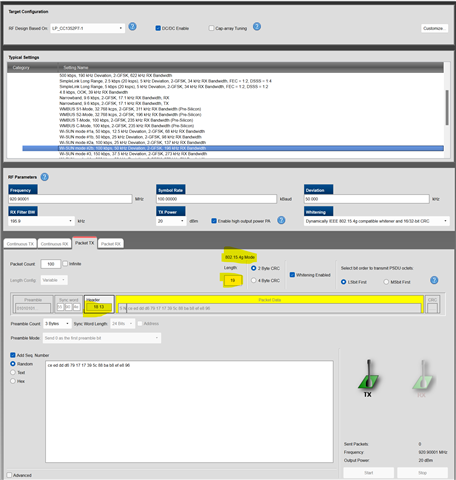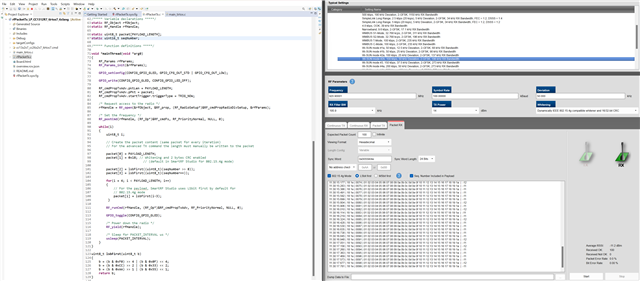Other Parts Discussed in Thread: ENERGYTRACE, SYSCONFIG
Tool/software:
I’m currently working with the RF_cmdPropTx function using SimpleLink and a custom PHY, and the packets are transmitting and receiving correctly. However, when I switch the configuration to Wi-SUN and use the advertisement command (RF_cmdPropTxAdv) to transmit packets, I encounter issues.
Here’s the function call I’m using to transmit the packet:
RF_runCmd(rfHandle, (RF_Op *)&RF_cmdPropRxAdv, RF_PriorityNormal, &callback, RF_EventRxEntryDone);While the command returns RF_EventLastCmdDone, indicating that the last command executed successfully, I’m experiencing no signal transmission on the SMA line most of the time. I am using spectrum analyzer to confirm the signal. Although I do occasionally observe a signal and can receive packets on the receiver end, it is inconsistent.
Could anyone assist in determining whether this is a bug in the SDK or if there might be an issue with my implementation? Your help would be greatly appreciated!


 .
.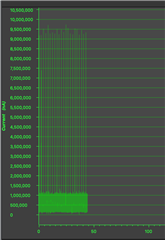
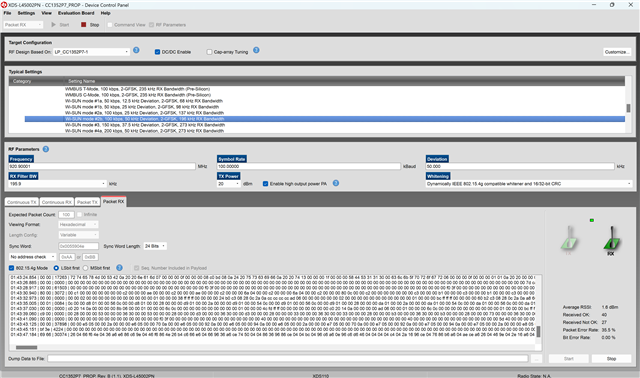


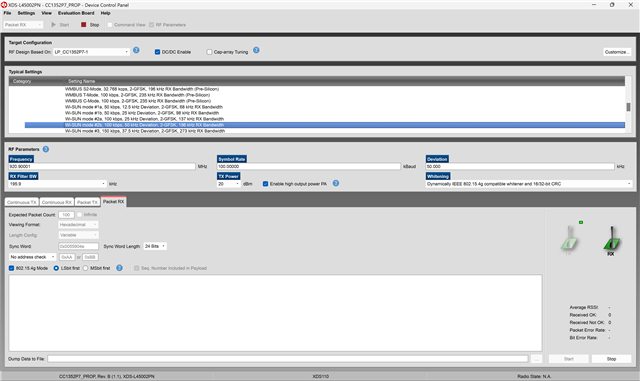 .
.
